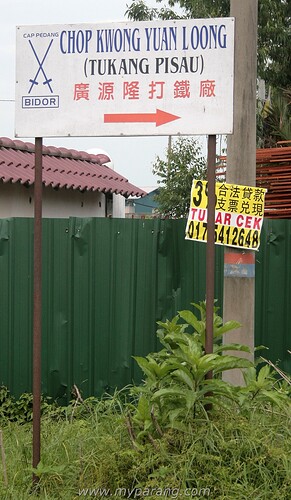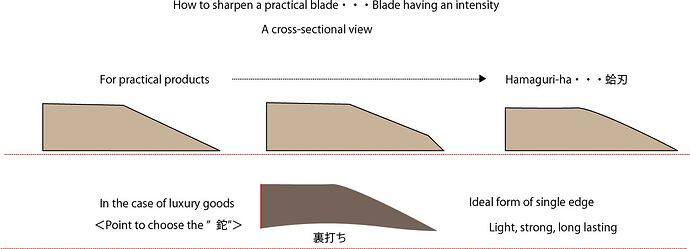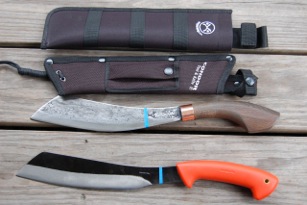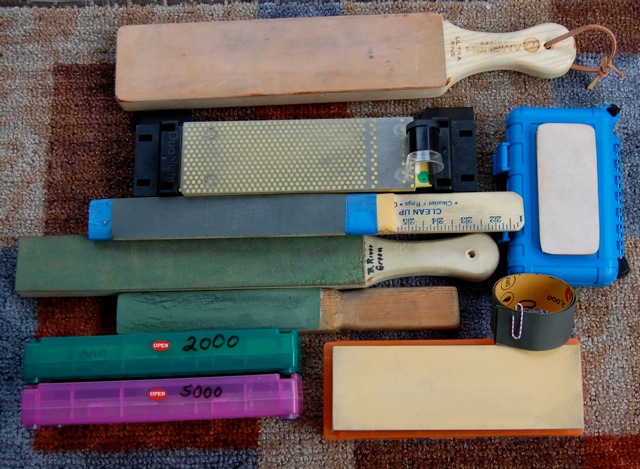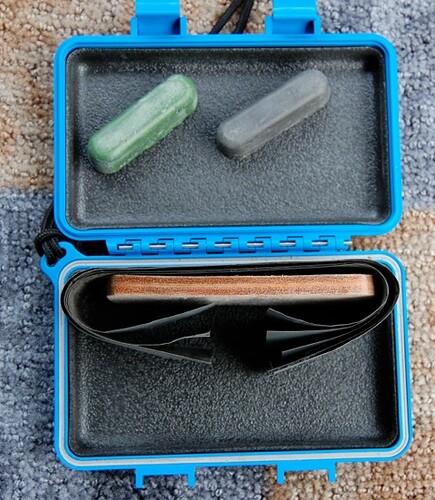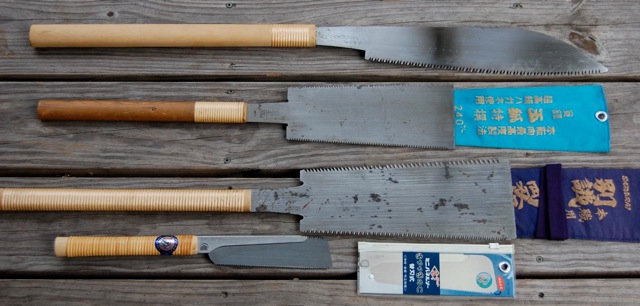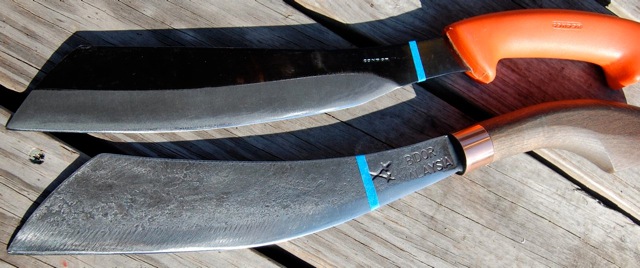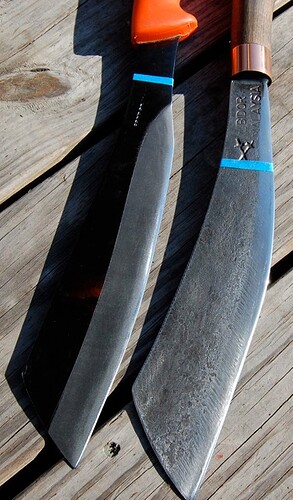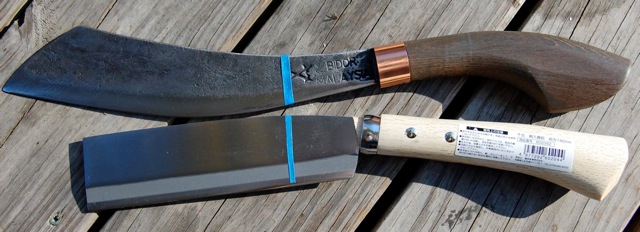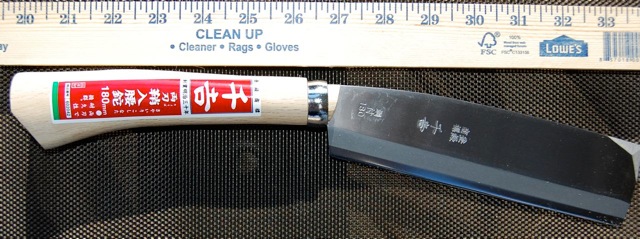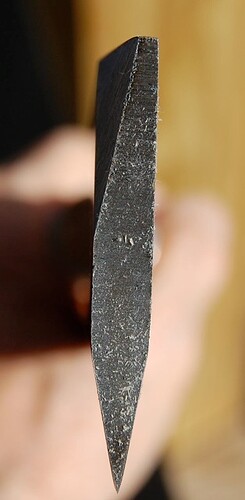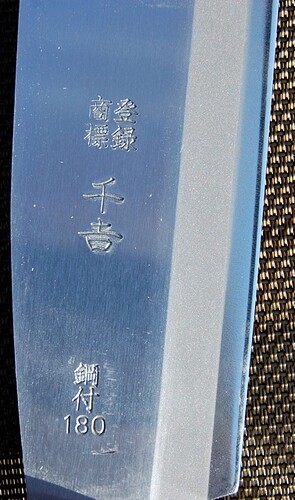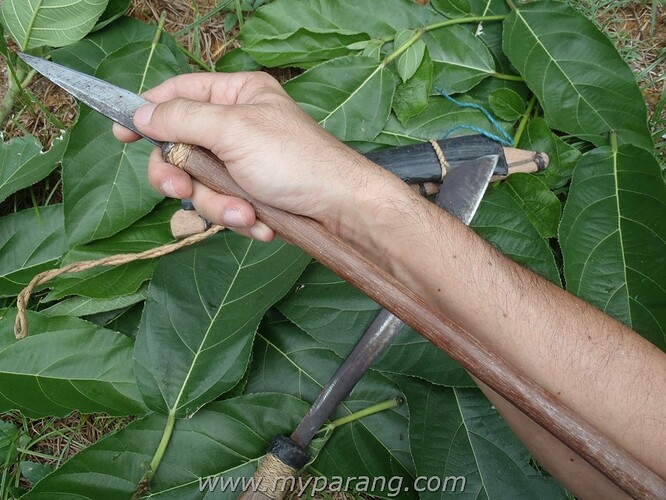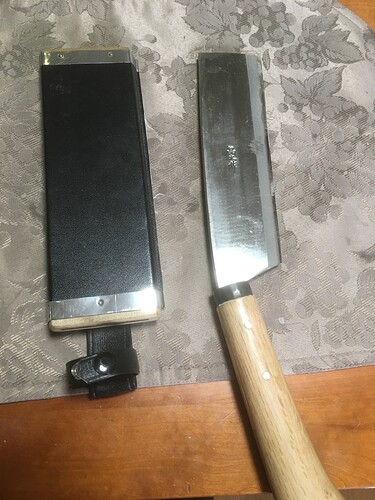The 千吉 ナタ 鉈 180mm 602042 – Senkichi Nata hatchet 180 mm 602042
arrived in the mail today. Two days ahead of scheduled delivery.
Clearly a much different tool from the two parangs. Heavier, more tip heavy, and more than twice as thick (6.5mm vs ~ 3mm) , and more of a wood splitting tool. The more complete product description pages states it is for pruning and wood splitting.
Many of the parang youtube videos go a little silly, slamming the parang hard into the wood, where due to its thinness it sinks in deeply. Then they have a difficult time getting it out. The better method with the parang would be be nibble more smaller bites out of the wood if chopping the wood into two pieces, and if splitting the wood, just get the split started then pound in a wood wedge to complete the splitting. Easy to do. My brother and I used to split locust trees into fence post, we had two iron wedges, and 4 wood wedges we cut when needed to make the work go faster.
This website has several high quality pictures of this same nata/hatchet model. Actually it shows both the single bevel (chisel bevel) model 片刃 (kataba), and the double bevel model, [which can be written as 両刃 (ryōba, ryouba) or 双刃 (sōba, souba) maybe there is a slight difference in the meaning]
Looking at the scabbard pictures on the above website - you will see two straps that hold the nata in the scabbard. The diagonal strap holds if fairly tightly. It is not leather, just some imitation leather. Above that strap - the straps that go around the handle is quite loose. I will probably glue a piece of leather or the fuzzy side of velcro on each side to make it hold tighter onto the handle.
Some pictures with specific observations:
Senkichi Nata vs MY Parang, blue tape marks balance point:
The nata : OAL = 14.5 in (360mm) Wt = 20.99oz. (595g). Blade thickness = 6.5mm.
Sticker on handle listing details, model number, etc.
Tapered tang connection to handle. The edges of the wood were sharp and uncomfortable to grip with bare hands, (but I have girly-man hands - maybe not a problem for those of you with tough manly manly man-hands  ) a few minutes with 600 grit sandpaper eased the edges along the tang slot, top and bottom side, the butt end of the grip, and the top side of the handle near the reinforcing ring. Only on the top side was the wood edge of the handle larger in diameter of the ring. The bottom side was flush. I also sanded off the sharp edge of the handle on the blade side of the ring. Making it more comfortable to grip and avoid hot spots that would cause blisters.
) a few minutes with 600 grit sandpaper eased the edges along the tang slot, top and bottom side, the butt end of the grip, and the top side of the handle near the reinforcing ring. Only on the top side was the wood edge of the handle larger in diameter of the ring. The bottom side was flush. I also sanded off the sharp edge of the handle on the blade side of the ring. Making it more comfortable to grip and avoid hot spots that would cause blisters.
You can see the exposed forward edges of the wood grip better in this view.
End view of the blade. My guess is the top end corner is machined off to avoid sharp corners on the non-cutting edge. However, the corner is only machined off on one side. Maybe it is done for a different reason. What I do not yet know.
Stamp marks on the blade :
It was pretty sharp out of the box. Thirty minutes with 2000 grit sandpaper & leather strop quickly made it a lot sharper. If I ever buy another one I would probably opt of a shorter lighter model. Haven’t done any wood cutting with it yet. Nice weather day, but busy day. My brother-in-law is in MICU, my son is home from Ohio to see him, and it’s college football game day. However, my team looked on course to have a W in the bag, only to lose the game in the last minute of the game. 
Maybe some of this information was of interest to anyone thinking of buying a ナタ 鉈 . 
I think the nata is meant to cut by sharpness and weight of the tool vs a parang that I think is designed to cut more by speed of movement and sharpness of the tool.
